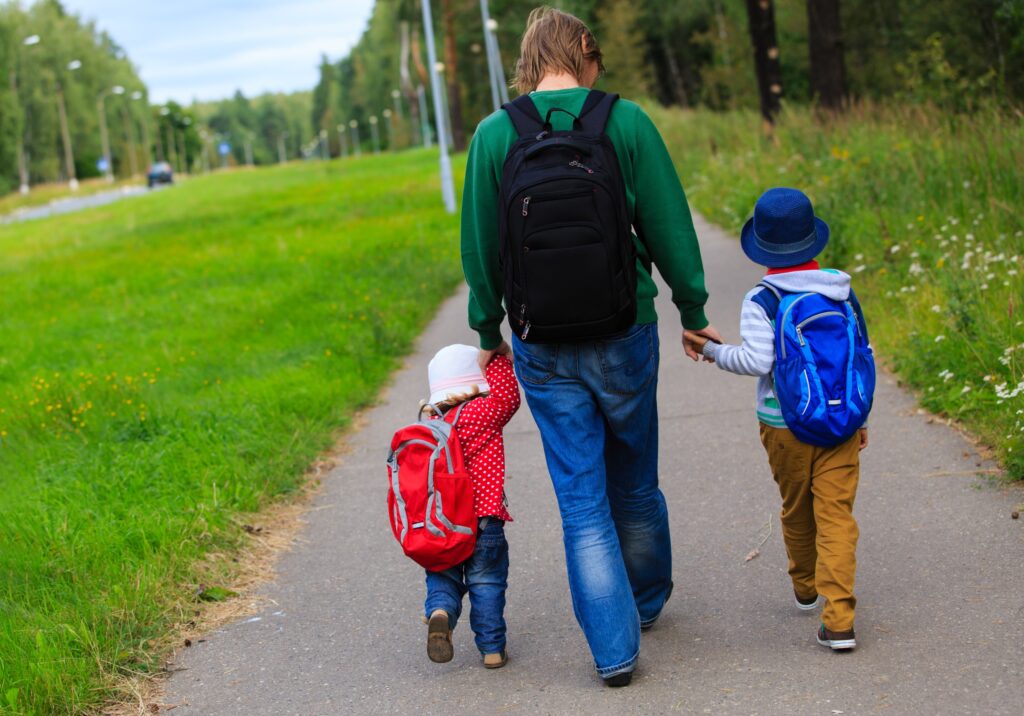Take Your Family to School Week: Four Crucial Safety Tips

Take Your Family to School Week takes place from February 11-17, 2024. Organizations like the National PTA use the event to promote various safety issues. Whether you and your children drive, walk, or bike to school, it’s important to practice proper safety measures in order to avoid car wrecks, pedestrian accidents, and bicycle crashes.
After serving injury victims from Kansas, Missouri, and Oklahoma for more than 25 years, Patterson Legal Group has encountered all kinds of injuries that were incurred during a school commute. As part of Take Your Family to School Week, our team wants to help make sure that your family knows what to look out for when commuting to school. The safety information below will help make sure that you and your children stay safe on their way to and from school.
Avoid Accidents with These “Take Your Family to School Week” Recommendations
With Take Your Family to School Week approaching, roads will be bustling with students traveling by car, bus, foot, and bike. It’s important to remember that increased activity brings heightened safety concerns. Here are four essential tips to navigate this week and beyond. By following this tip you’ll greatly increase your family’s safety and reduce the chance of an accident injury.
Be a Mindful Driver, Especially When Driving Near and Through School Zones
- Slow Down in School Zones: school zones are designated for a reason. Reduce your speed and be extra vigilant, especially during peak drop-off and pick-up hours. Pay close attention to flashing lights and crossing guards, and never pass a stopped school bus that has its stop arm extended.
- Eliminate Distractions: put your phone away, avoid eating or drinking while driving, and keep music at a low volume. Distracted driving significantly increases the risk of accidents, impacting other motorists, bicyclists, and pedestrians.
- Watch for Pedestrians and Cyclists: be extra cautious near crosswalks, intersections, and areas with heavy foot and bike traffic. Yield to the right of way, and anticipate unpredictable movements, especially from younger children.
- Practice Defensive Driving: assume other drivers may make mistakes. Maintain adequate following distance, use turn signals properly, and avoid aggressive maneuvers. Remember, defensive driving is about anticipating potential hazards and reacting proactively.
Teach Your Kids Bus Safety
- Know the Rules: whether you’re a parent, student, or driver, familiarize yourself with your local bus safety regulations. This includes understanding stop sign laws, appropriate boarding and disembarking procedures, and designated loading zones.
- Stay Visible and Alert: when waiting for the bus, stand at least 10 feet back from the curb. Also, avoid running towards the bus and wait patiently until it comes to a complete stop before boarding. Once onboard, stay seated and maintain good behavior.
- Look Twice, Cross Once: never cross the street in front of a moving bus. Wait until the bus has fully stopped and the door opens before exiting. Look both ways for oncoming traffic before crossing, and use the designated crosswalk whenever possible.
- Talk to Your Children: if your children ride the bus, discuss bus safety rules with them regularly. Emphasize the importance of staying calm and following instructions, and encourage them to report any concerns to the bus driver.
Teach Your Kids How to Walk and Bike with Confidence
- Plan Your Route: choose well-lit, designated pedestrian and bike paths whenever possible. Avoid busy streets and intersections, especially during peak traffic hours. Be aware of weather conditions and visibility factors when planning your route.
- Obey Traffic Laws: treat intersections and crosswalks like you would on a bike or in a car. Stop at red lights and stop signs, yield to the right of way, and use hand signals to communicate your movements clearly.
- Stay Visible and Predictable: wear bright clothing and reflective gear, especially during low-light conditions. Ensure your bike has proper lighting and reflectors. Maintain a predictable pace and avoid weaving in and out of traffic.
- Look Out for Each Other: share the road responsibly. Pedestrians, be mindful of cyclists and give them ample space. Cyclists, yield to pedestrians in crosswalks and be courteous towards other road users.
Get Involved and Share the Responsibility
- Community Engagement: advocate for safer roads and infrastructure, such as designated bike lanes, pedestrian crossings, and reduced speed limits in school zones. Participate in community events promoting road safety awareness.
- School Collaboration: work with your school to develop and implement comprehensive safety plans. Encourage walking and biking to school by organizing walking/biking groups and providing secure bike parking facilities.
- Family Communication: discuss safety rules and expectations with your family regularly. Role-play safe walking, biking, and bus riding practices. Make safety a priority and lead by example.
Injured on the Way to School? Call Patterson Legal Group.
By embracing these tips and fostering a culture of shared responsibility, we can make Take Your Family to School Week and every week a safe and enjoyable experience for everyone on the way to school. Remember, safety is not a one-time goal, but an ongoing journey. Together, we can create a community where walking, biking, and using public transportation are accessible and safe for all.
Unfortunately, there are times when accidents will happen no matter how many safety precautions you take. If a member of your family was hurt on the way to or from school due to the actions or inactions of another party then contact Patterson Legal Group for immediate assistance.
You can reach Patterson Legal Group by phone at (888) 687-2400 and online through our encrypted contact form or connecting with our LiveChat representatives. Our experienced and accomplished trial lawyers have recovered more than $250-million in settlements for thousands of injury victims. Reach out to us today and take the first step towards the money that you deserve for your injuries.





